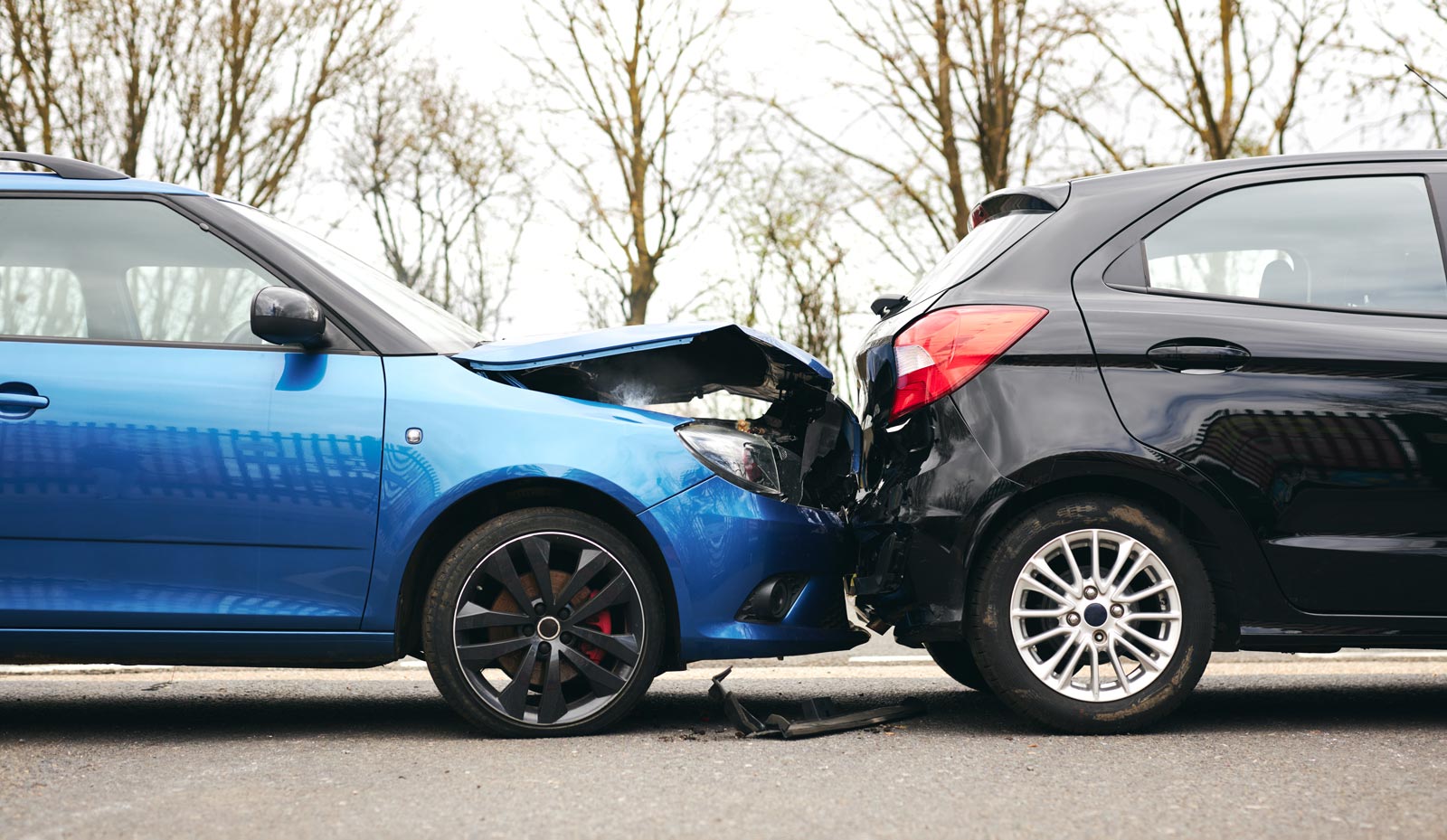Traffic safety experts and auto manufacturers have known for decades that large passenger vans are especially likely to be involved in certain kinds of serious crashes. While these vans are a convenient way to transport groups of people, larger vehicles require a greater degree of driving skill to operate safely—particularly when fully loaded with passengers or equipment.
Before you or a loved one jumps into a 15-passenger van for school, a church outing, or other adventures, you should understand the dangers of these vehicles. Continue reading and learn how to protect yourself, what to do if you’re injured in a crash involving a large passenger van, and how a car accident attorney can help.
Why Are Large Passenger Vans More Dangerous Than Other Kinds of Vehicles?
Large passenger vans, which can typically hold 12 to 15 people, are much more dangerous than a normal car or truck. One of the main sources of danger is that these vehicles experience high rates of rollover crashes. While only one-third of single-car accidents involve a rollover, more than 50% of passenger van accidents are rollover crashes.
There are several reasons for the high risk of rollover for a large vans. Those reasons include:
High Center of Gravity
Large passenger vans sit higher above the road, so they have a relatively high center of gravity compared to most other vehicles. The higher the center of gravity, the less stable and more prone to rolling over a vehicle will be. This is particularly true when the vehicle turns, travels at high speeds, or gets struck by another vehicle.
Large Size and Weight
The sheer weight and length of passenger vans make them more difficult to handle, even under normal circumstances. On wet and slippery roads or in emergency situations (like a tire failure or another driver swerving unexpectedly), large vans can be especially tricky to maneuver. The additional weight and momentum also mean that 15-passenger vans take longer to stop and create devastating impacts when they hit another vehicle.
Poor Handling Under Load
A 15-passenger van fully loaded with passengers and cargo is significantly more difficult to operate safely compared to an empty van. According to the National Highway Traffic Safety Administration (NHTSA), a van carrying 10 or more occupants is three times as likely to be involved in a rollover crash as a van with five or fewer occupants.
As the van fills up, the additional load shifts the center of gravity higher and further back. Inexperienced drivers may not realize how much they need to adjust their driving habits to compensate, and they can easily lose control.
Warning Signs of a Dangerous Passenger Van
Sometimes, there’s nothing you can do to avoid a crash. However, before you or loved one ride in a large van, look for these potential hazards:
Poor Maintenance (Especially Tires)
Poor maintenance of a passenger van’s tires, brakes, and other safety systems can cause collisions and rollovers. If you have concerns about the vehicle’s safety, ask the operator whether he or she checks the tire pressure on a weekly basis and when it was last inspected by a mechanic.
When passenger vans are fully loaded, the seating arrangements tend to place excessive weight on the rear tires. If the tires have been used beyond their estimated life (even if the tread depth is good) or if they are underinflated, the pressure can cause a blowout.
The NHTSA published an eye-opening study many years ago that found:
- More than half (57%) of all large vans had at least one tire that was underinflated by more than 25% of the recommended pressure
- Nearly three quarters of all large vans (74%) had at least one tire that was misinflated (either over- or under-) by 25% or more
- Both of the above figures were roughly double the figures for regular passenger vehicles (27% and 39%, respectively)
Overloading
Van manufacturers also set specific guidelines for how much weight you should pack into a large passenger van and where you should place it. If the van is overloaded and improperly packed, the risk of a rollover or other crash increases significantly.
Many organizations will only carry 5–10 people in their large vans. Even though the vans may claim a larger capacity, passenger vans become both more difficult to handle and more likely to roll over when they’re loaded with more than 10 people.
Additionally, a 15-passenger van should also never use a rooftop carrier. Place additional weight on the roof raises the vehicle’s already-high center of gravity even further, which further increases the risk of a rollover.
Passengers Not Wearing Seatbelts
Because passenger vans are frequently used by schools, youth groups, and other organizations, their occupants sometimes treat them like school buses and ignore seat belts. But vans aren’t buses, and they lack many of the important design and safety features of vehicles designed for 30 or more passengers.
According to the NHTSA, between 2010–2019, 69% of all people killed in 15-passenger van accidents weren’t wearing a seatbelt. Not only that, but 57% of those killed specifically in rollover crashes were ejected from the vehicle.
Make sure your loved ones know they should always wear seatbelts, even in a large passenger van.
An Inexperienced Driver
The NHTSA recommends that 15-passenger vans should only be operated by experienced drivers with a commercial drivers license that includes a passenger endorsement. However, this is not a legal requirement in Texas, where the law generally does not require more than a standard drivers license to operate a large passenger van.
Responsible organizations, however, will follow the NHTSA’s stricter recommendations — or at least require their drivers to undergo training before they take the wheel of a big van. Before riding in a passenger van, don’t hesitate to ask the driver how much training they’ve had and how much experience they have driving vans that carry 10 or more passengers.
Speeding
Passenger vans and high speeds make a dangerous combination due to their poor handling, heavy weight, and high center of gravity. When a large van goes over 50 miles per hour, the likelihood of a rollover increases significantly.
How Can an Attorney Protect My Legal Rights After a Large Passenger Van Crash?
After a passenger van accident, your first priority should be your safety. Call emergency services to receive prompt medical attention for your injuries. Then, as soon as you’re able, contact an experienced vehicle wreck lawyer. They can help you:
Collect Evidence Before It’s Gone
Because many 15-passenger van crashes are single-vehicle auto accidents, it’s important that the van is preserved (in its existing condition) after the crash. In a single-vehicle crash, the maintenance or condition of the van could be a key contributing factor to the crash. If the owner repairs the tires, brakes, or other parts, it might be impossible to identify the cause of the wreck.
If you contact a Texas car accident lawyer immediately, he or she can help you issue “preservation letters” to prevent the van’s owner from disposing of valuable evidence. Your lawyer and his or her experts might want to inspect the vehicle and look for root causes of the crash.
If possible, have someone take as many pictures as possible at the scene of the accident. Ask them to document any damage to the van, including the tires. You can also do this yourself if you feel physically able, but receiving medical treatment for injuries should be your top priority.
Determine Who Is at Fault
One of the first things an attorney will do after the accident is help you determine what caused the crash, who bears the responsibility, and which potential sources of insurance coverage exist. Relevant insurance coverage could help you pay for medical bills, lost wages, pain and suffering, and any other damages you may have sustained.
Depending on your circumstances, you may have a claim against one or more of the following parties:
- The van driver. As a passenger, you have legal rights if you are injured in an auto accident caused by the driver of the vehicle you’re in. This can be uncomfortable if the driver is a friend, family member, or member of an organization you belong to (for example, a church or university group), but keep in mind that successful personal injury claims generally get paid by insurance companies, not individuals.
- The van owner or operator. Many passenger vans are owned and operated by hotels, transportation companies, or other commercial enterprises who have a responsibility to ensure that their drivers are properly licensed and trained and that their vehicles are well maintained.
- The driver of another vehicle involved in the crash. The crash might have been caused completely by the driver of the other vehicle. That’s exactly what happened to Melissa, one of our recent clients, who suffered injuries when another vehicle rear-ended the hotel shuttle she was riding in.
- Your own insurance company. If you have personal injury protection (PIP) or uninsured/underinsured motorist coverage as part of your own auto insurance policy, these coverages may come into play.
As highlighted above, determining who was at fault isn’t always a simple matter. Critical evidence can quickly get lost or manipulated if you don’t take steps to preserve it. Eyewitness accounts can vary. Responsible parties aren’t always honest, and insurance companies will do anything in their power to avoid paying out a large settlement.
An experienced attorney will know how to collect and preserve evidence, follow up with witnesses, and even consult with expert witnesses such as accident reconstructionists and traffic safety professionals to get the full picture.
Calculate a Fair Settlement
If you’ve been hurt by another person’s negligence, you shouldn’t be on the hook for your own medical treatment, lost earnings, and other costs and losses.
But how do you determine fair compensation for all the different after-effects of a car wreck? It usually isn’t a straightforward process. Current medical bills and missed paychecks are easy enough to add up. But how much medical care are you going to need in the future? What are your long-term accident-related costs?
And what about the value of things that don’t come with a price tag—like chronic pain, long-term cognitive impacts from a brain injury, or losing your ability to spend quality time with friends and family?
One thing you can be fairly certain of: the insurance company is going to undervalue these damages when they make their initial settlement offer. Working with an attorney can increase your chances of getting a fair settlement offer that will provide for your long-term needs.
RELATED ARTICLE: What Should You Do if You’re Injured Riding Public Transportation in San Antonio?
Crosley Law Firm: We Fight for Passenger Van Victims in San Antonio and Across Texas
At Crosley Law Firm, we use our experience in large passenger van, bus, and truck accident cases to advocate and get fair compensation for our clients. Our lawyers have access to advanced technologies that help us investigate large passenger van crashes to identify the causes.
To schedule a free consultation with one of our attorneys, complete our online form or call us at 210-LAW-3000 | 210-529-3000.
References
U.S. Department of Transportation. (n.d.). 15-passenger vans. NHTSA. https://www.nhtsa.gov/road-safety/15-passenger-vans.
Thiriez, K.; Ferguson, E.; Subramanian, R. (May 2005). 12 & 15 Passenger Vans Tire Pressure Study: Preliminary Results. National Highway Transportation Safety Administration. DOT HS 809 846. https://crashstats.nhtsa.dot.gov/Api/Public/ViewPublication/809846
The content provided here is for informational purposes only and should not be construed as legal advice on any subject.









